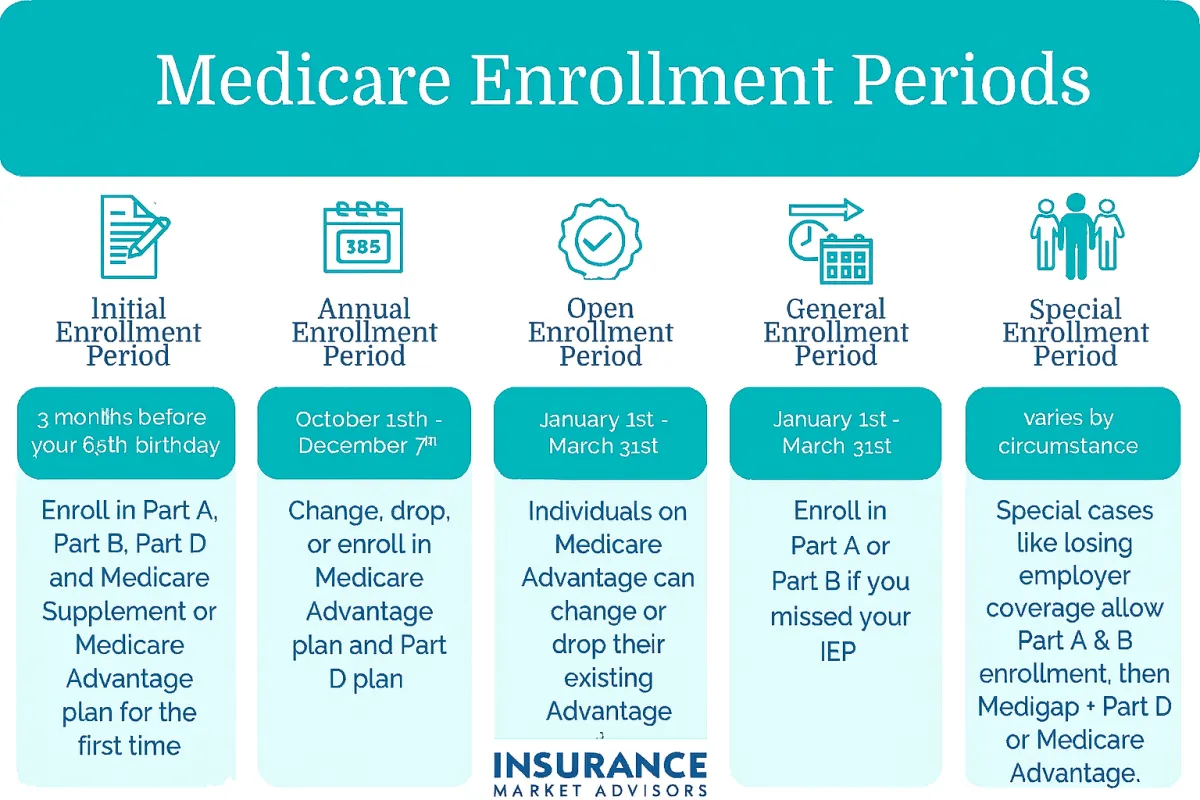
Your Comprehensive Guide to Medicare Enrollment
Signing up for Medicare is one of the most important milestones in retirement planning. While the process can seem complicated, it doesn’t need to be stressful. Whether you’re approaching 65 yourself or helping a family member prepare, knowing the enrollment rules and deadlines can help you avoid unnecessary costs and secure the coverage that fits your needs from the start.
Finding the Right Time to Enroll
Timing is critical with Medicare. Enrolling too early can mean paying for coverage you don’t yet need, while delaying enrollment may result in permanent penalties. Although eligibility begins at 65 for most people, your personal situation — including work status and existing insurance — will determine when it makes sense to enroll.
Medicare Basics: What You’re Signing Up For
Medicare is not a single program but a collection of parts:
• Part A (Hospital Insurance) – Covers inpatient stays, skilled nursing, and hospice.
• Part B (Medical Insurance) – Covers doctor visits, outpatient care, and preventive services.
• Part C (Medicare Advantage) – Private plan alternatives that bundle A & B and may include extra benefits like dental, vision, and drug coverage.
• Part D (Prescription Drug Coverage) – Helps cover the cost of medications.
If you’re already collecting Social Security, you may be automatically enrolled in Parts A and B. Otherwise, you’ll need to take the initiative to sign up.
When to Enroll in Medicare
Still Working at 65
• Large Employers (20+ employees): You may delay enrollment without penalty if your employer coverage is considered creditable. Many still choose Part A at 65 since it’s usually premium-free.
• Small Employers (fewer than 20 employees): You must enroll in Medicare at 65, as Medicare becomes your primary insurance.
COBRA Coverage
If you’re on COBRA, you still need to sign up for Medicare when you turn 65. COBRA becomes secondary, and delaying Medicare will result in late penalties and possible coverage gaps.
Military & TRICARE
• At 65, enrollment in Medicare Parts A and B is required. TRICARE then shifts to TRICARE For Life and works as your supplemental coverage.
• ACA Marketplace Plans
Marketplace plans end when you become Medicare-eligible. Subsidies stop at 65, making Medicare almost always the more affordable option.
Start Your Medicare Conversation
Book a free call below—or if you’re ready now, give us a call at (833) 854-5745
Medicare Enrollment Periods
• Initial Enrollment Period (IEP): A 7-month window around your 65th birthday (3 months before, your birthday month, and 3 months after). Best time to enroll in Part B to avoid penalties.
• Special Enrollment Period (SEP): Triggered by certain life events, such as losing employer coverage or moving. Usually lasts 2–8 months depending on the event.
• General Enrollment Period (GEP): January 1 – March 31 each year for those who missed their IEP. Coverage starts the month after you apply, but penalties may apply.
• Annual Enrollment Period (AEP): October 15 – December 7. You can switch between Original Medicare and Medicare Advantage, change Advantage plans, or update Part D coverage.
• Medicare Advantage Open Enrollment: January 1 – March 31. Lets you switch Advantage plans or go back to Original Medicare.

Signing Up for Medicare Online
The easiest way to enroll is through the Social Security Administration’s website, where you can apply for Parts A and B, manage existing benefits, and update personal information. The online application typically takes less than 30 minutes.
Mistakes to Avoid
• Assuming Medicare Covers Everything: Original Medicare doesn’t cover dental, vision, hearing aids, or most long-term care. Many people need Medicare Advantage or Medigap for full protection.
• Delaying Part D: Even if you don’t take prescriptions now, failing to enroll in drug coverage (or another creditable plan) on time can lead to lifelong penalties.
• Not Reviewing Plans Annually: Costs and coverage change every year, so it’s worth comparing your options during AEP.
Special Cases
• Disability Enrollment: If you’re under 65 and on disability benefits, Medicare usually begins after 24 months. Some conditions like ALS or ESRD allow immediate enrollment.
• Living Abroad: Medicare generally doesn’t cover care outside the U.S. If you move back, late penalties may apply unless you qualify for a SEP.
Preparing for Enrollment
To make the process smoother:
• Gather documents like proof of age, citizenship, and employment history.
• Review your current insurance and how it works with Medicare.
• Research Medicare Advantage and Medigap options in your area.
• Consider your health, prescriptions, and budget before deciding.
Get Help From Insurance Market Advisors
Medicare can be confusing, but you don’t have to figure it out on your own. At Insurance Market Advisors, we guide you through the process, explain your options, and help you avoid mistakes that could cost thousands.
👉 Schedule a free call today to speak with a licensed Medicare advisor, or call us directly at
We’ll help you choose the right Medicare plan with confidence.
Copyrights 2024| Insurance Market Advisors™ | Terms & Conditions









